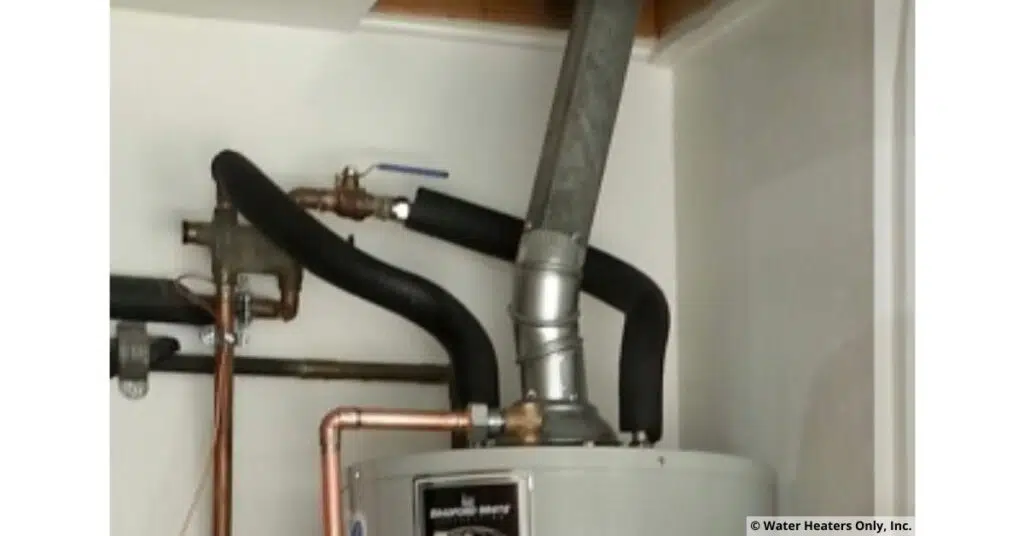Water Heater Venting Issues
When most people think about their water heater, they think only of the water heater itself and not necessarily the pipes and vent that are connected to it. However, the vent is an important part of a well-functioning water heater. Improperly installed vents can not only cause a water heater to malfunction, but it can also become a dangerous situation as carbon monoxide is released through the vent and you don’t want carbon monoxide going anywhere but outside of your home. In this blog, we will discuss some of the signs and causes of water heater venting issues.

However, before we get into potential venting issues, let’s briefly go over the different types of water heater vents. The most common vent is known as the atmospheric vent. This is the metal vent that runs up through the ceiling or connects with the furnace vent or chimney. The vent itself connects to a vent cap placed on top of the water heater and uses the difference in temperature between the air and the heated exhaust to allow the exhaust to flow up the vent naturally.
The second type of vent is known as a power vent. This vent is typically made of plastic or PVC and uses a blower motor to vent the exhaust. Power vents often run horizontal, which allows the power vent water heater to be used in locations where a typical atmospheric vent may not be possible.

Finally, there is the direct vent type of water heater vent. Direct vents are also typically plastic or PVC and can run horizontally as well. Direct vents not only send exhaust to the outside but the vent has a tube running down the center of the vent that is used to bring fresh air into the burner assembly. These are typically used in locations where there is not an abundance of combustion air available.
As far as checking for problems with your vent, a good place to start is to just simply take a look at the vent and check for obvious problems such as broken or disconnected pieces. Also, make sure to check that the vent cap is seated properly on the top of the water heater.
One venting problem that can occur is called back drafting. This is usually only a problem with the atmospheric vents and it happens when there isn’t sufficient air flow to allow the vent to exhaust properly. Signs that your water heater is not venting properly include melted plastic near the opening between the water heater and the vent cap. Other signs include condensation on the top of the water heater and even on the cold water line. If you are unsure, there is a test that can be performed. Shut all the windows and doors and turn off all fans in the home. Then run hot water in your bath or shower. While the water is running, put your hands around the vent opening between the vent cap and water heater. If you feel warm air blowing on your hands, you could have a venting issue.
One other potential cause of venting issues is blockage either in the vent or chimney, if your vent is connected to a chimney. A blockage could be caused by any number of issues including pests, bird’s nests, even just lint and dirt that have built up over the years. If you suspect this is the problem, give us a call to come out and take a look.
In conclusion, when you inspect your water heater, don’t forget to take a look at your vent. As we said, venting issues can cause a number of issues with the proper functioning of your water heater and, in the most extreme cases, could be dangerous or even deadly. If you are concerned, follow our tips and, if you still need help, call us 24 hours a day, 7 days a week at 323-223-7071 to set up an appointment to further diagnose the vent on your water heater.

